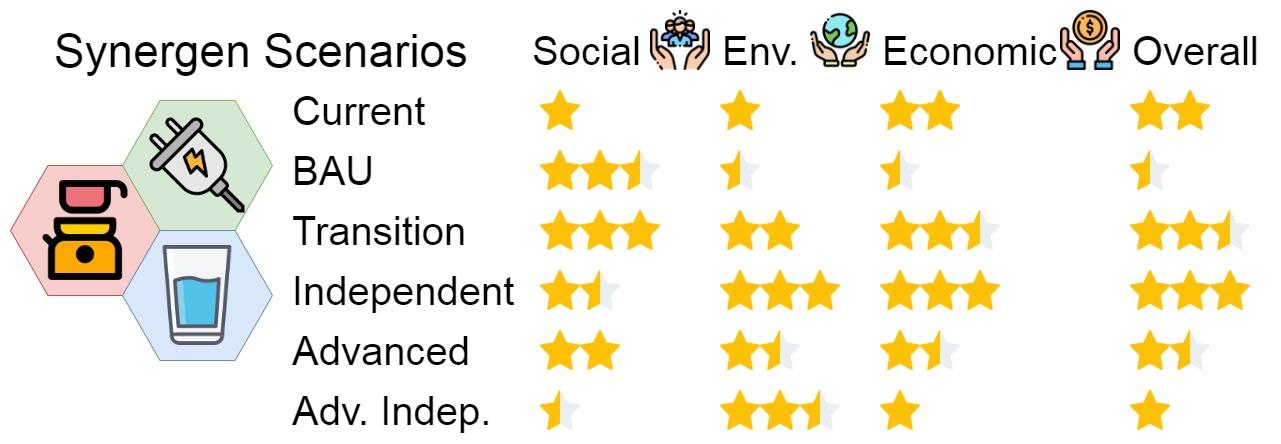Citation:
Abstract:
The success of deploying energy and water technologies in remote communities in developing countries can be improved by considering their synergistic relationships and their social, economic and environmental implications. This paper first evaluates social implications of current energy and water supply in a prototypical remote community against five future (2030) scenarios for synergistic provision of electricity, heat for cooking and water. This is followed by an integrated assessment of the social, environmental and economic life cycle sustainability through multicriteria decision analysis. The Business-as-usual (BAU) scenario shows high life cycle health impacts but low impacts from local air pollution. The contrary is true for the Independent and Advanced Independent scenarios which assume community self-sufficiency in energy and water supply. Greater access to electricity and water in the Advanced and Advanced Independent scenarios increases the potential for human development and security of supply, but there is an increase in the risk of accidents and decrease in social acceptability of the water supply. Similarly, a transition towards clean cooking fuels away from traditional solid biomass reduces local air pollution but increases reliance on imported fuels (BAU and Advanced scenarios). The Transition scenario is socially the most sustainable option, while Independent and Advanced Independent are the best options environmentally. They also have the lowest total operating costs, but have higher capital requirements than most other scenarios. Overall, unless extreme preferences for either environmental or social aspects are adopted, the Transition and Independent scenarios emerge as the most sustainable options. This suggests that current energy and water supply to remote communities can be transitioned sustainably to a self-sufficient system that does not depend on imported resources. The scenarios developed in this work present a framework for an integrated design and evaluation of energy and water supply in remote communities with the aim of aiding stakeholders in defining sustainable transition pathways.


